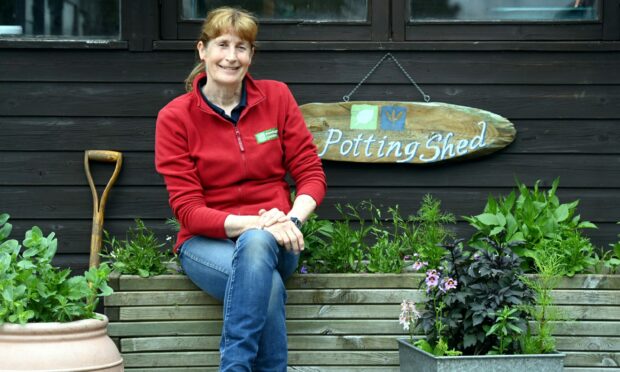I’d like to start this week by saying a massive thanks to all of you who attended the garden fair at Scone Palace at the start of June.
Your support was very much appreciated by the efforts of not only the event organising team but also the nurseries, garden centres, crafters, garden groups and societies, along with all other traders that combine to make our gardening world such a special place.
What was best thing about the fair?
One of the best things about the fair was getting to speak to so many fellow gardeners.
I like these opportunities which can occur from being invited to a garden club giving a talk or simply bumping into you whilst getting the shopping.
From the chat and the questions I get asked it’s a good chance to gauge what problems and challenges facing us at the moment.
Last year it was slugs and snails, asking the best way to deal with them.
I felt like I answered this question a thousand times so was armed and ready with my response- crushed egg shells, orange peels, beer traps, gravel, copper rings, encourage more birds into your garden or go out at night with a head torch and pick them off.
You’ll probably find there is no one solution and need to try a combination of them all.
What’s the pest of the moment?
Maybe because it’s been so dry, the opposite of the conditions they prefer, this isn’t the pest of the moment, this year it was what to do with leather jackets?
Leather jackets are small, greyish-brown grubs that will eventually become the more familiar daddy-longlegs’.
Their numbers can be high at this spring time of year following a wet autumn, which feels about right, damp conditions favouring the survival of the eggs.
Q&A session with Carole Baxter
During a question and answer session in the Palace Potting Shed tent where Carole Baxter was joined by her friend and former Beechgrove Garden colleague Lesley Watson, this problem came up a couple of times with damage occurring in the lawn and on young plants being nibbled in the veg plot.
They are a challenge with limited options to deal with them.
As always, finding a balance of nature in your garden can see starlings and crows pick them out of your lawn though leaving holes in the process.
The solution that Carole suggested is the one that I would go for which is soaking an area of your lawn in the evening then covering it with a material that will block out the light such as black polythene.
The next day once you peel back the cover you could expect to see large numbers of leatherjackets on the lawn surface where all you would then have to do is pick them off.
A more expensive option to treat this pest problem would be by an application of nematodes that a member of the audience shared his experience of.
Nematodes are what gardeners call a biological control, using a natural enemy to manage unwanted pests rather than a chemical spray.
In the case of controlling leather jackets, following the instructions on the packet they will be added to a can of water then applying to the problem area giving it a good soak.
For the gentleman who raised this we all worked out that there were a couple of reasons why this may not have been effective.
His first application was at the beginning of May and although the daytime temperatures may have been over the minimum of 12 degrees centigrade for them to work, there’s a highly likely chance that at nighttime it would’ve still been too cold.
Maybe not convinced that was the answer he went on to tell us that although the packet said it contained five million nematodes, he was indeed six short!
Only a fellow Fifer could come up with this
Sometimes preventative measures are the answer so if leather jackets are a problem for you then apply a treatment during a warm night in late August and September to prevent any overwintering in the soil.
I like how gardeners often use handy little sayings for knowing how and when to carry out jobs.
Wisteria are wonderful plants, adding a touch of class to a garden.
I have one trained on a south facing wall along horizontal wires, the white flowers just now gracefully, cascading down.
They are vigorous growing plants requiring pruning to keep them in check but also to ensure you get a good flower from them.
Traditionally this gets down twice a year, once in summer to tidy up the straggly growth and also to stimulate flower buds for next year and then the second time late winter, cutting back to two buds from which the new season growth will come.
How much should it be pruned?
Now, with the summer prune I was taught that you cut back the whippy growth to six leaves.
However, Scottish gardening legend Lesley Watson suggested we cut back to seven leaves as a simple way to remember what to do.
In February, the second month of the year we cut back to two buds.
In July, the seventh month, we cut back to seven. Simple.
I cant wait for next years fair already.












Conversation